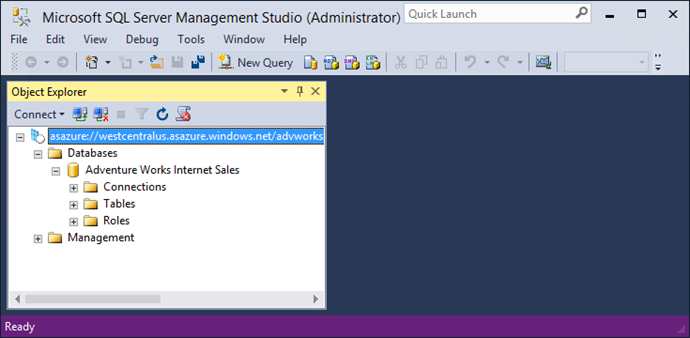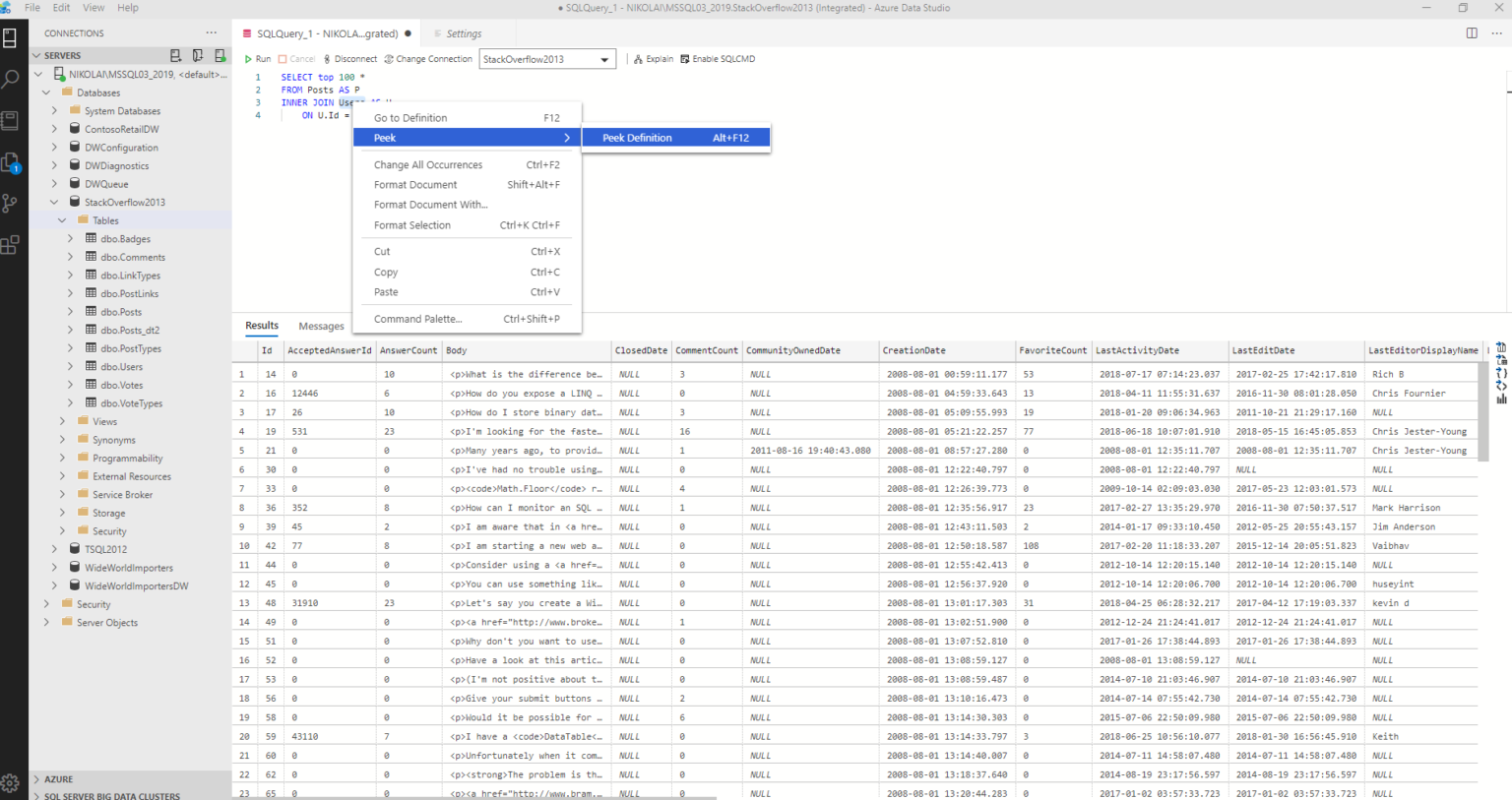

Right after connecting to a SQL instance a dashboard provides instance information, action buttons, a list of searchable databases, backup statuses, and database sizes in chart form. While its previous form had some rough edges, the 1.0 release of Azure Data Studio and later iterations are much more polished and deliver amazing functionality and performance when compared to SQL Server Management Studio.
#Ssms vs azure data studio code
This open source tool from Microsoft works on Linux, Mac, and Windows and builds off a very familiar foundation for anyone accustomed to using Visual Studio Code (opens new window). To configure your environment for Azure Active Directory authentication, see Authenticate to Synapse SQL.Announced during Microsoft's 2018 Ignite event, Azure Data Studio (opens new window) (formerly SQL Operations Studio) Now that you can connect and query, try visualizing the data with Power BI. In this example, the usPopulationView view has 3664512 rows. Now that you've established a database connection, you can query the data.Ĭopy the following T-SQL query into the query window: SELECT COUNT(*) FROM In the following example, the FactInternetSales table has 60398 rows. Run the query by selecting Execute or use the following shortcut: F5.

A new query window opens.Ĭopy the following T-SQL query into the query window: SELECT COUNT(*) FROM dbo.FactInternetSales Right-click your database in SQL Server Object Explorer. Now that a database connection has been established, you can query the data. Expand demo to see the content in your sample database. You can view the databases associated with the server. To explore, expand your Azure SQL server.
#Ssms vs azure data studio password

Open SQL Server Management Studio (SSMS). To connect to Synapse SQL using dedicated SQL pool, follow these steps: To find this name, see Connect to Synapse SQL. For serverless SQL pool one is already provisioned, named Built-in, in your workspace at creation time. To create one, see Create a dedicated SQL pool.


 0 kommentar(er)
0 kommentar(er)
